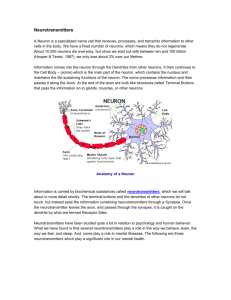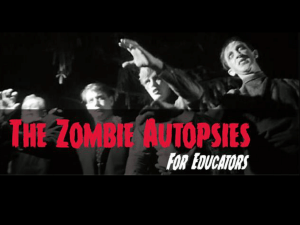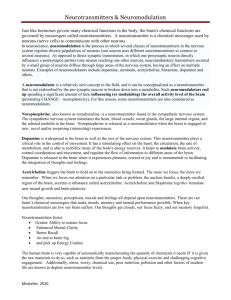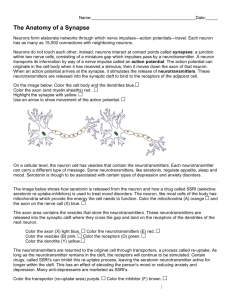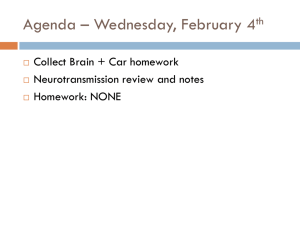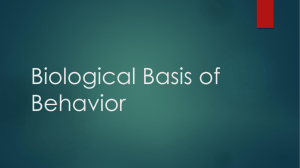The Zombie Diaries
advertisement
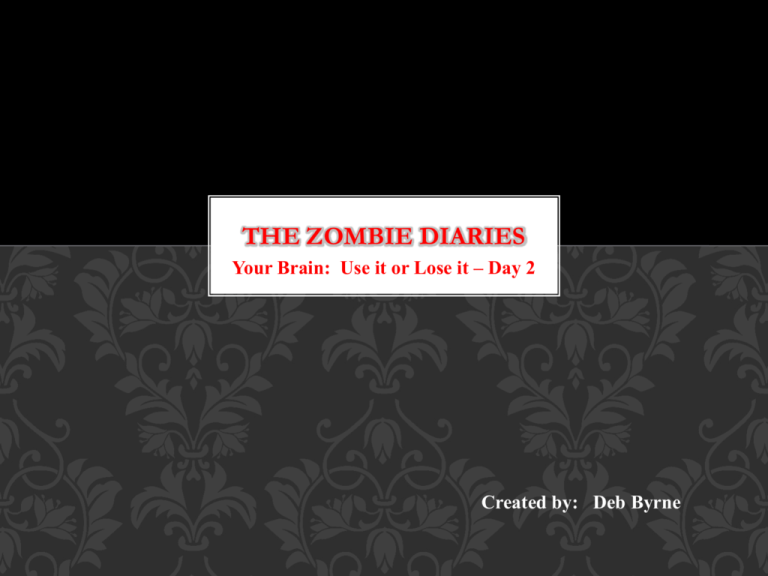
THE ZOMBIE DIARIES Your Brain: Use it or Lose it – Day 2 Created by: Deb Byrne LESSON 2 The Neuroanatomy of a Zombie OVERVIEW What’s the Big Idea?: To understand how information (messages) travel across the brain, and how messages are sent back across the pathways to the rest of the body (neurotransmission). 1.) Choose a partner 2.) Get a Chromebook and a packet from the end of the table 3. ) Review pages 4 - 10 of this Powerpoint. Then read pages 11-17 for new information. 4.) Find a quiet spot. Use the giant neuron you created last week and your notes to answer the “quiz” questions. You can also go back and forth between this powerpoint and one of the two brain interactives that we explored before: http://science.nationalgeographic.com/science/health-and-human-body/human-body/brain-article/ http://ngm.nationalgeographic.com/2007/11/memory/brain-interactive 5.) Neurotransmission Dance Party 2015 6.) Meet back as a group to discuss our findings 7.) Zombie Brains – compare to our brains to create THEORIES about what is NOT working because of the Zombie disease Neurons and Neurotransmission Review with each other: 1. What is a neuron? 2.What does it do ? 3.How does it do it? A Neuron is: •A specialized cell that receives information and transmits it to other cells A Neuron How Does it Work? Neurotranmission is a fancy name for two or more neurons communicating with each other. There are 4 neurons communicating in the picture to the right or you could say that neurotransmission is taking place 1 3 4 2 Neurotransmitters are released from terminal buttons and cross the tiny space between it and the next neuron called the synaptic gap. Now let’s watch two animated version of neurotransmission. Click on the links below Neurotransmitter Synapse 3D Animation Neuron – 3D Medical Animation Neurotransmitters • A neurotransmitter is a chemical messenger that carries signals between neurons as well as other cells in the body. These chemicals are released from the end of one neuron and cross the synapse to receptor sites in the next neuron. Neurotransmitters Acetylcholine • Acetylcholine (often abbreviated ACh) is the most common neurotransmitter. It is located in both the central nervous and peripheral nervous system • Acetylcholine was the first neurotransmitter be identified in 1914 • As a neuromodulator it acts on basic autonomic and muscular fuctions • Sarin Gas disrupts its ability to function and often leads to death Neurotransmitters Dopamine • Generally involved in regulatory motor activity • In the basal ganglia, involved in mood, sensory perception, and attention Neurotransmitters Glutamate • • • • Is an excitatory neurotransmitter Plays a role in learning and memory Too much can cause seizures Malfunction of glutamate has also been associated with Alzheimer's’ Neurotransmitters Epinephrine • Also known as adrenaline • Causes the feeling of being “revved up” or on edge • Activates a “fight or flight” reaction in the autonomic nervous system Neurotransmitters Serotonin • Attention and other complex cognitive functions, such as sleep (dreaming), eating, mood, pain regulation • Neurons which use serotonin are distributed throughout the brain, stomach and spinal cord • Mood disorders Neurotransmitters GABA (gamma-aminobutyric acid) • GABA is the most important and common inhibitory neurotransmitter • Stops the brain from becoming overexcited »Too much may cause hallucinations
